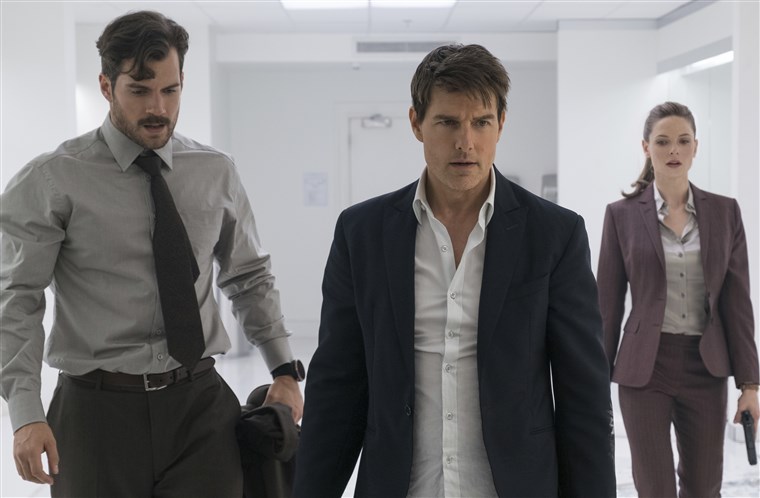
There is no denying that James Cameron is one of cinema’s great boundary-pushers. This is evidenced by all the films he has directed over the years, which include The Terminator, Aliens, The Abyss, T2, True Lies, and Titanic. With each film, he has consistently taken the medium to its limits and made technological advancements that expand its capabilities. He is a visionary and groundbreaking artist who deserves to be ranked amongst other filmmaking giants such as Welles, Hitchcock, and Kubrick for his forward-thinking contributions to the development of the art and science of filmmaking. In particular, Cameron’s influence on the use of digital technology in modern filmmaking can be found in just about every major release today.
Cameron stands apart from his above-mentioned predecessors by also remaining at the very top of the list of filmmakers who have repeatedly found great box office success with mainstream viewers. Cameron’s films (which, to date, he has always written or co-written himself) are full of insightful observations on the human condition and the mysteries of life, but they’re always palatable, easily accessible, and entertaining enough to attract mass audiences. Cameron is both an inescapable artist and a crowd-pleasing showman who knows how to grab his audience’s attention in just about every conceivable way.
Avatar: The Way of Water, the long-awaited sequel to the massive 2009 hit, is typical Cameron. It uses revolutionary and advanced motion capture technology to transform live-action performances into digital creations and place them within an otherworldly digital environment. There are many moments of adventure, action, and spectacle to wow audiences, but there are also enough parallels to and commentary on the modern world to provide them with ample food for thought. Like the first film, Avatar: The Way of Water’s storyline avoids preaching while serving as an allegory for such pressing topics as the colonialism of Native American country, environmentalism, animal rights, capitalism, the abuse and misuse of technology, and the lack of morality behind excessive military force. Like every Cameron-directed film, Avatar: The Way of Water has a plethora of high ambitions that allow room for success on many levels.
The story is set many years after the events of the first film, with Jake Sully (Sam Worthington) living his second life on Pandora as a Na’vi, which, as we all know, is a race of large, blue-skinned people native to the planet. When the story begins, Jake is peacefully raising his family of four children with his warrior wife, Neytiri (Zoe Saldana). Their peaceful life is soon upended, however, when the memories of the first film’s main villain, the military leader Miles Quaritch (Stephen Lang), are implanted into a Na’vi avatar so he can lead an army to invade Pandora and capture Jake to prevent him from getting in the way of their gaining control of the planet’s most valuable resource, unobtanium. Jake, Neytiri, and their children flee their Omaticaya clan and soon take refuge with the Metkayina clan, a group of Na’vi whose lives revolve around the water of a nearby ocean.
The specifics of the film’s storyline aren’t quite as unique as the world they are set within. A good portion of the primary story beats are a tad predictable due to their somewhat formulaic design. The sequel just isn’t as unique or as fresh as the first film because it inescapably lacks the element of surprise. It doesn’t help that Cameron chose to use the same main antagonist as the first film. As great as Lang may be in the role, the decision to bring his character back inhibits the sequel from fully finding its own tone and voice and sometimes makes it feel a bit redundant.
At roughly three hours and fifteen minutes, the pacing of the movie surprisingly feels rushed. It is crowded with ideas, images, and characters and is ultimately more concerned with wedging all its elements in than with letting its story naturally flow as it should. While the movie impressively never drags during its hefty runtime, it only occasionally takes the proper time to allow sequences to play out in a way that completely envelops the audience. Suspense and tension are often at the mercy of momentum. There are moments of pure visual poetry that showcase Cameron at his absolute best, but they are often cut short and their full effect is muffled due to the film’s rush to move on to its next big moment.
The Oscar-winning visual effects are, needless to say, an endlessly impressive and massive feat. That being said, the film’s extreme reliance on digital effects does, in rare instances, call attention to its current weaknesses. Especially when blended with live actors, some of the digital creatures are just too glossy, clean, smooth, and lifeless to achieve the naturalism and realism for which Cameron was obviously aiming. Though it creates unquestionable moments of awe and beauty in the film, digital technology still has a way to go before it can flawlessly render fully believable living beings.
Avatar: The Way of Water is a highly ambitious film that bites off a tad more than it can chew with its overstuffed storyline and its over-reliance on still-developing digital technology. It is still a massive accomplishment, however, that deserves its success and the recognition that it has so far received. James Cameron’s creation both owes its exceptional quality to and is slightly marred by the filmmaker’s seemingly never-ending need to top himself. While this is certainly accomplished with the film, it might have turned out even better if Cameron had more concerned himself with organically following what the story needed rather than allowing his ambition to dictate the flow. The many positive and few negative aspects of the film manage to coexist naturally, however, as they are both the product of the painstaking efforts of one of today’s most progressive and grandiose filmmaking talents.
GRADE: B+


